I'll add to this one -
I too have been in the consumer electronics repair business and witnessed the decline of quality, mainly starting in the late 80s. For me, it was when the big guys ie. Mitsubishi, Panasonic, Sony severely started cutting costs. Heatsinks got smaller (with puny aux cooling fans being added ie, Technics amps), solvent based glue used to fix components lifting circuit traces and becoming conductive (ie. Mitsubishi), use of bonded SMD parts rendering the item unrepairable (ie. Funai, Goldstar, Emerson, Fisher), use of thermoplastics in VCR transports (everyone is guilty of this one), cheap capacitors in SMPS (again, everyone is guilty), CHEAP PLASTIC EVERYWHERE AND ANYWHERE.
I absolutely hate SMPS wall warts. They're good for the manufacturer because they get around UL listing/certifying their product with an external supply. I refuse to purchase anything with an SMPS wall wart. The only thing I own that does have one is an RME ADI Pro2 D/A, but i ended up building an external linear supply for that.
I still repair CD players. I have a stash of parts to last me a while and even have the correct gear to align the transport/ optical pickup. Many people still use CD players and have huge CD collections, as i do too. I don't plan on getting rid of them any time soon. I use an Oppo UDP and Krell KPS20 as a transport. No desire to waste my time transferring my CDs and risk ruining/corruptiing the audio.
I too have been in the consumer electronics repair business and witnessed the decline of quality, mainly starting in the late 80s. For me, it was when the big guys ie. Mitsubishi, Panasonic, Sony severely started cutting costs. Heatsinks got smaller (with puny aux cooling fans being added ie, Technics amps), solvent based glue used to fix components lifting circuit traces and becoming conductive (ie. Mitsubishi), use of bonded SMD parts rendering the item unrepairable (ie. Funai, Goldstar, Emerson, Fisher), use of thermoplastics in VCR transports (everyone is guilty of this one), cheap capacitors in SMPS (again, everyone is guilty), CHEAP PLASTIC EVERYWHERE AND ANYWHERE.
I absolutely hate SMPS wall warts. They're good for the manufacturer because they get around UL listing/certifying their product with an external supply. I refuse to purchase anything with an SMPS wall wart. The only thing I own that does have one is an RME ADI Pro2 D/A, but i ended up building an external linear supply for that.
I still repair CD players. I have a stash of parts to last me a while and even have the correct gear to align the transport/ optical pickup. Many people still use CD players and have huge CD collections, as i do too. I don't plan on getting rid of them any time soon. I use an Oppo UDP and Krell KPS20 as a transport. No desire to waste my time transferring my CDs and risk ruining/corruptiing the audio.
use of thermoplastics in VCR transports (everyone is guilty of this one), cheap capacitors in SMPS (again, everyone is guilty), CHEAP PLASTIC EVERYWHERE AND ANYWHERE.
Indeed, I hear you!
At the shop, that white translucent plastic used in VCR's, CD players, Tape decks, turntables........ we used to call it "milk bottle plastic" recycled from old milk bottles.
Used in gears, pulleys, levers, sliding parts....
It gets brittle over time, cracks from stress, and yes, it kept us in business fixing those messes, along with "popped top" capacitors in everything.
Many people still use CD players and have huge CD collections, as i do too.
I've found that blu-ray players work very well for playing CDs.
I've found that blu-ray players work very well for playing CDs.
Common DVD players always played CD's.
I have around 3000 CDs, and all play normally. Maybe 5% of the library CDs around here
can have problems, and about half of those can be cleaned and will then play ok.
That's better odds than for used LPs.
That is a good score, I have had CD's that lost the coating, had the "silver" layer coming loose etc. Therefor I switched to solid state playback a long time ago. The wearing out of CD mechanisms also helped making that decision.
In at least 15 years I never lost any file thanks to a backup system.
That is a good score, I have had CD's that lost the coating, had the "silver" layer coming loose etc. Therefor I switched to solid state playback a long time ago. The wearing out of CD mechanisms also helped making that decision.
In at least 15 years I never lost any file thanks to a backup system.
I remember back when CDs just came out in mass and there were people saying the aluminum vapor deposit would degrade due to the lacquer failing, specifically CDs made by Nimbus. I have over 5000 CDs and not a single one has suffered from this 35 yrs later.
Common DVD players always played CD's.
That's why I use a UDP for this as it plays just about any form of optical media and its fairly skip resistant at high volume levels (very important to me).
The Krell transport plays alot of difficult to read CDs reliably and has the I2S output i need for feeding my custom twin balanced DC coupled TDA1541A dac. I have yet to hear a more correct sounding dac.
My issue with "ripping" CDs into WAV files is the error rates. I've tried alot of software and they ALL generate errors at practical higher read speeds, even with my Plextor drives. Transferring CDs at 1x or 2x is way too slow for me. I dont have that kind of time. So far the best software I've found for CD transfer is steinberg wavelab.
My issue with "ripping" CDs into WAV files is the error rates. I've tried alot of software and they ALL generate errors at practical higher read speeds, even with my Plextor drives. Transferring CDs at 1x or 2x is way too slow for me. I dont have that kind of time. So far the best software I've found for CD transfer is steinberg wavelab.
Years ago, at Circuit City (remember them?) I purchased the MAGIX Audio Cleaning lab software for about $30 I think.
Still using it, it's quite versitle, does a fine job of burning CD's with a host of useful features, and I can select the burn speeds as well.
I also have an older copy of Sound Forge which is a great program.
Both of these work on Win10!
Personally, I've found bad capacitors in SMPS causing a failure about as often as I've seen a bad cap cause blown diodes and fuses in linear amps.
The bottom line is an SMPS is smaller, cheaper, and uses less power - even under 25VA.
It's not necessarily better - there are times when a linear supply works better even if it costs more and weighs more of course!
But in a real world test of a simple standby power circuit, I found that with a 6VA SMPS the input power required was 0.6W. With a 6VA transformer and RC filter/linear regulator, the circuit required 3W. 2.4W isn't much but over a lifetime it costs $$$. Besides, I rarely ever see a low power SMPS fail from bad parts, and if it does, the whole thing was 1.50$ - in contrast to the 6.95$ for the transformer, 75 cents for the power resistor, and 2$ for the cap, 1$ for the heatsink, 1$ for the LM7812 = 11.70$
Here's the SMPS in this example: Module d'alimentation a decoupage 12V 500ma, alimentation a tension constante 5W, carte d'alimentation 220 vac dc vers 12V | AliExpress
Just my opinion of course, but I've had good luck with SMPS and linear. It all comes down to quality of components really.
The bottom line is an SMPS is smaller, cheaper, and uses less power - even under 25VA.
It's not necessarily better - there are times when a linear supply works better even if it costs more and weighs more of course!
But in a real world test of a simple standby power circuit, I found that with a 6VA SMPS the input power required was 0.6W. With a 6VA transformer and RC filter/linear regulator, the circuit required 3W. 2.4W isn't much but over a lifetime it costs $$$. Besides, I rarely ever see a low power SMPS fail from bad parts, and if it does, the whole thing was 1.50$ - in contrast to the 6.95$ for the transformer, 75 cents for the power resistor, and 2$ for the cap, 1$ for the heatsink, 1$ for the LM7812 = 11.70$
Here's the SMPS in this example: Module d'alimentation a decoupage 12V 500ma, alimentation a tension constante 5W, carte d'alimentation 220 vac dc vers 12V | AliExpress
Just my opinion of course, but I've had good luck with SMPS and linear. It all comes down to quality of components really.
> 2.4W isn't much but over a lifetime it costs $$$.
About $3.40 per year, 24/7, at $0.17/kWh.
In a year it was not worth buying a bigger lower-loss 60Hz core. In a decade it was. Those switchers change the economics a LOT. (In part because the shipping is more than the module.)
About $3.40 per year, 24/7, at $0.17/kWh.
In a year it was not worth buying a bigger lower-loss 60Hz core. In a decade it was. Those switchers change the economics a LOT. (In part because the shipping is more than the module.)
My issue with "ripping" CDs into WAV files is the error rates. I've tried alot of software and they ALL generate errors at practical higher read speeds, even with my Plextor drives. Transferring CDs at 1x or 2x is way too slow for me. I dont have that kind of time. So far the best software I've found for CD transfer is steinberg wavelab.
If you get errors you are doing something extraordinarily wrong. It’s easy to get repeatable and perfect results from pretty much any modern drive with EAC and compare to the database. Plextor last made a real drive of their own maybe 20 years ago. Anything remotely recent branded Plextor is something else. I suggest you try with a modern BD-ROM drive anyway. This whole post sounds like something from a time capsule sealed in 1998.
> 2.4W isn't much but over a lifetime it costs $$$.
About $3.40 per year, 24/7, at $0.17/kWh.
In a year it was not worth buying a bigger lower-loss 60Hz core. In a decade it was. Those switchers change the economics a LOT. (In part because the shipping is more than the module.)
My Technics receiver, a 1989 model, still lives on, although I changed the main "standby" capacitor (1000uF 16V to a 1000uF 25V) for the mini transformer supplied 5 volt supply.
Nothing wrong with the old cap mind you, but 30 years I felt was enough time.
> 2.4W isn't much but over a lifetime it costs $$$.
About $3.40 per year, 24/7, at $0.17/kWh.
In a year it was not worth buying a bigger lower-loss 60Hz core. In a decade it was. Those switchers change the economics a LOT. (In part because the shipping is more than the module.)
If you get errors you are doing something extraordinarily wrong. It’s easy to get repeatable and perfect results from pretty much any modern drive with EAC and compare to the database. Plextor last made a real drive of their own maybe 20 years ago. Anything remotely recent branded Plextor is something else. I suggest you try with a modern BD-ROM drive anyway. This whole post sounds like something from a time capsule sealed in 1998.
I select 16X while burning, takes just a few minutes, perfect copies.
Both my drives (C/D) are WD's, with a PLDS DVD +-RW DH - 16AES drive.
Has someone seen what is inside modern amp of a said good quality enough about their smps : Chord, Hypex PS, Labgruppen, Yamaha, etc !
I have bought a Chord second hand 25 years ago and he is still great : Never opened it btw (yes that is possible even for a diyer !) What some say : if it ain't broken...
I have bought a Chord second hand 25 years ago and he is still great : Never opened it btw (yes that is possible even for a diyer !) What some say : if it ain't broken...
More URLs and images
https://www.diyaudio.com/community/threads/sony-tc-k770es-help-needed.341792/ (post #9)
http://www.repeater-builder.com/motorola/spectra/spectra-caps.html
http://www.stereo2go.com/topic/index.php?content_oid=532592670936504274&board_oid=193392314111653425
https://www.overclock.net/threads/horrible-pictures-of-dead-caps.1551784/
https://8bitplus.co.uk/articles/capacitors-problems/
https://www.diyaudio.com/community/threads/sony-tc-k770es-help-needed.341792/ (post #9)
http://www.repeater-builder.com/motorola/spectra/spectra-caps.html
http://www.stereo2go.com/topic/index.php?content_oid=532592670936504274&board_oid=193392314111653425
https://www.overclock.net/threads/horrible-pictures-of-dead-caps.1551784/
https://8bitplus.co.uk/articles/capacitors-problems/
Attachments
-
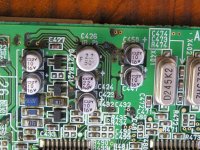 DCC900-VI.jpg228.2 KB · Views: 99
DCC900-VI.jpg228.2 KB · Views: 99 -
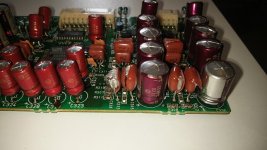 DCC900-V.jpeg75.8 KB · Views: 103
DCC900-V.jpeg75.8 KB · Views: 103 -
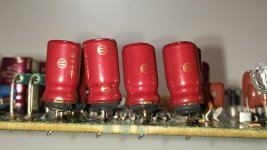 DCC900-IV.jpeg59.2 KB · Views: 99
DCC900-IV.jpeg59.2 KB · Views: 99 -
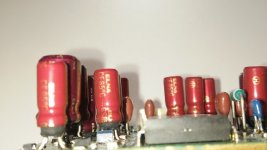 DCC900-III.jpeg41.5 KB · Views: 102
DCC900-III.jpeg41.5 KB · Views: 102 -
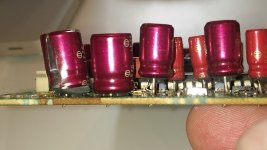 DCC900-II.jpeg56 KB · Views: 99
DCC900-II.jpeg56 KB · Views: 99 -
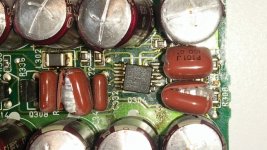 DCC900-I.jpeg92.2 KB · Views: 100
DCC900-I.jpeg92.2 KB · Views: 100 -
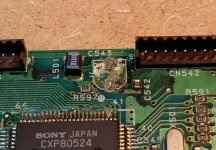 DTC-55ES-II.jpg64.1 KB · Views: 107
DTC-55ES-II.jpg64.1 KB · Views: 107 -
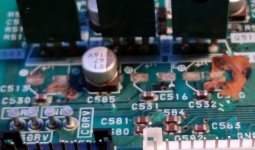 DTC-55ES-I.jpg40 KB · Views: 95
DTC-55ES-I.jpg40 KB · Views: 95 -
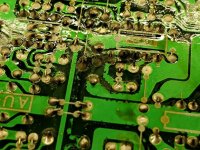 CDP-X33ES-III.jpg177.7 KB · Views: 89
CDP-X33ES-III.jpg177.7 KB · Views: 89 -
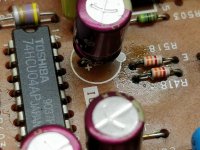 CDP-X33ES-IIjpg.jpg129.4 KB · Views: 94
CDP-X33ES-IIjpg.jpg129.4 KB · Views: 94 -
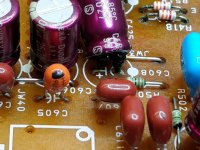 CDP-X33ES-I.jpg114 KB · Views: 95
CDP-X33ES-I.jpg114 KB · Views: 95 -
 Sony DTC670.jpg195.2 KB · Views: 97
Sony DTC670.jpg195.2 KB · Views: 97 -
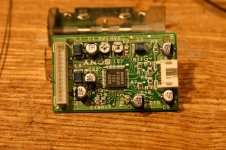 Sony 670 DAT-I.jpg192.3 KB · Views: 97
Sony 670 DAT-I.jpg192.3 KB · Views: 97 -
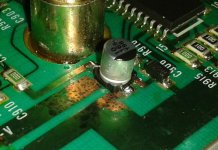 Sony TC-K750ES.jpg85.5 KB · Views: 91
Sony TC-K750ES.jpg85.5 KB · Views: 91 -
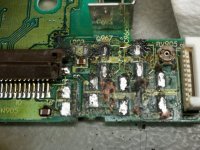 SONY GV-8E-II.jpg427.1 KB · Views: 91
SONY GV-8E-II.jpg427.1 KB · Views: 91 -
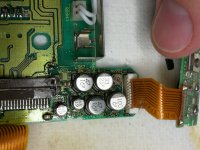 SONY GV-8E-I.jpg477.3 KB · Views: 87
SONY GV-8E-I.jpg477.3 KB · Views: 87 -
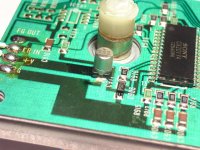 Sony TC-K770ES.jpg65.2 KB · Views: 93
Sony TC-K770ES.jpg65.2 KB · Views: 93 -
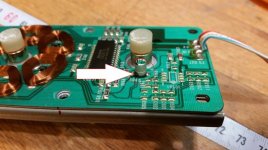 Sony TC-K850ES-II.jpg68.9 KB · Views: 88
Sony TC-K850ES-II.jpg68.9 KB · Views: 88 -
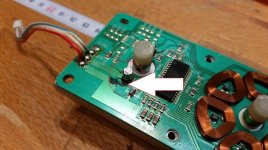 Sony TC-K850ES.jpg75.1 KB · Views: 97
Sony TC-K850ES.jpg75.1 KB · Views: 97
Cerafine and Duorex... both meant to be "for audio" and both garbage.
I hope the 5532 in DCC900 is not caused by caps. The device can't have worked properly this way.
Till today I have rarely seen SMD electrolytic caps go so bad as in the pictures. Was this a just so in a certain period in time or are there still such quality SMD electrolytic caps being produced today?
I hope the 5532 in DCC900 is not caused by caps. The device can't have worked properly this way.
Till today I have rarely seen SMD electrolytic caps go so bad as in the pictures. Was this a just so in a certain period in time or are there still such quality SMD electrolytic caps being produced today?
- Home
- Design & Build
- Parts
- Most unreliable and most inferior Electrolytic (Bad) Caps - Device Overview wanted